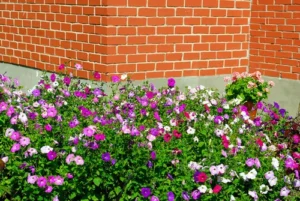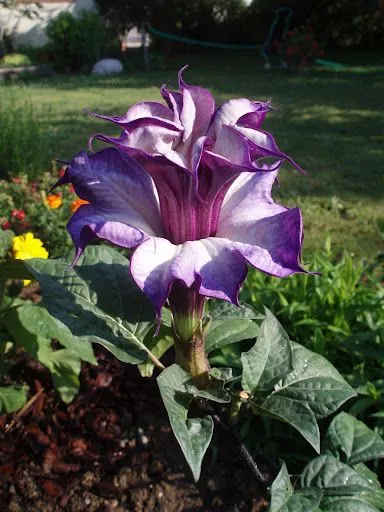Peony Flower Gardening
Peony Flower Gardening History
The peony flower, with its lush blooms and rich history, stands as one of the most admired and beloved plants in gardens around the world. Known for its large, fragrant flowers and wide range of colors, the peony offers a sense of elegance and grace that has captivated gardeners for centuries. From its historical significance to practical gardening tips, the world of peony gardening is both diverse and fascinating.
The peony’s story begins in ancient times, with roots that trace back to the Asian continent. Peonies have been cultivated in China for over 2,000 years, where they were considered symbols of prosperity, good fortune, and honor. Ancient Chinese poets and artists often depicted peonies in their works, celebrating the flower’s beauty and the joy it brought to gardens and landscapes. The Chinese regarded the peony as the “king of flowers,” a testament to its esteemed place in their culture and horticultural heritage.

admiration for peonies
The admiration for peonies was not confined to China. The flower spread to other parts of Asia, including Japan and Korea, where it continued to be a symbol of beauty and grace. In Japan, peonies were often grown in temple gardens and enjoyed for their fleeting beauty, which was thought to represent the transient nature of life. Similarly, in Korea, peonies were cultivated for their beauty and were featured in traditional art and decorations.
The introduction of peonies to the Western world came in the 18th century, thanks to plant explorers and botanists who traveled to Asia in search of new and exotic species. The peony quickly gained popularity among European gardeners, who were enchanted by its large, fragrant blooms and rich colors. The plant was embraced by botanical enthusiasts and garden designers, who incorporated it into formal gardens and estate landscapes.
In contemporary gardening, the peony remains a favorite choice for many gardeners. Its diverse range of colors, including shades of pink, red, white, and yellow, allows for a variety of garden designs and arrangements. Peonies are also valued for their longevity, as they can live for decades with proper care, making them a worthwhile investment for any garden.
Appealing Aspects Of Growing Peonies
One of the most appealing aspects of growing peonies is the relative ease with which they can be cultivated. Peonies are known for their hardy nature and ability to thrive in a range of conditions. They prefer well-drained soil and a sunny location, though they can tolerate partial shade. Peonies are also relatively low-maintenance, requiring only basic care to ensure their continued health and beauty.
When planting peonies, the first step is selecting the right variety for your garden. Peonies come in several types, including herbaceous peonies, tree peonies, and intersectional peonies. Herbaceous peonies die back to the ground each winter and regrow from the root system in the spring. Tree peonies, on the other hand, are woody shrubs that retain their stems throughout the winter and bloom on old wood. Intersectional peonies, also known as Itoh peonies, are hybrids between herbaceous and tree peonies and combine traits from both types.
The Choice Of Peony Variety
The choice of peony variety will influence the planting and care techniques you use. Herbaceous peonies are the most common and easiest to grow, while tree peonies and intersectional peonies offer different aesthetics and growth habits. When choosing a variety, consider factors such as bloom time, flower color, and plant size to find the best fit for your garden.
Once you have selected a peony variety, the next step is to plant it. Peonies are best planted in the fall, allowing the roots to establish themselves before the winter cold sets in. However, if you are planting in the spring, do so as early as possible to give the plants time to become established before the growing season begins. The planting site should be in full sun, though peonies can tolerate partial shade. They prefer well-drained soil rich in organic matter, so amend the soil with compost or well-rotted manure before planting.
To plant a peony, dig a hole that is twice as wide as the root ball and about as deep as the peony’s roots. Place the peony in the hole, making sure that the top of the root ball is level with the soil surface. Peonies should be planted with their eyes, or growth buds, about 1 to 2 inches below the soil surface. Planting too deep can prevent flowering, so be careful to plant at the correct depth. After planting, water the peony thoroughly and mulch around the base to help retain soil moisture and suppress weeds.
Watering Peonies
Watering peonies is a crucial aspect of their care. While peonies are relatively drought-tolerant, they do require regular watering, especially during dry periods. Water the plants at the base, avoiding overhead watering to prevent fungal diseases. It is important to keep the soil consistently moist but not waterlogged, as too much moisture can lead to root rot. A layer of mulch can help maintain soil moisture and keep the roots cool during hot weather.
Fertilizing peonies is another important aspect of their care. Peonies benefit from a balanced fertilizer applied in early spring, just as the new shoots begin to emerge. Use a fertilizer with an equal ratio of nitrogen, phosphorus, and potassium, or a fertilizer specifically formulated for flowering plants. Follow the instructions on the fertilizer package for the correct application rate, as over-fertilizing can harm the plants and lead to excessive foliage growth at the expense of blooms.

Peonies also benefit from periodic division and maintenance. While peonies can remain in the same spot for many years, they may eventually become overcrowded and produce fewer blooms. Dividing peonies is best done in the fall, after the plants have finished blooming and the foliage has died back. To divide a peony, carefully dig up the root clump and separate it into smaller sections, each with at least three to five eyes. Replant the divisions in a new location, following the same planting guidelines as for the original plants.
In addition to regular care, peonies can sometimes face challenges such as pests and diseases. While peonies are generally resistant to most garden pests, they can occasionally suffer from issues such as ants, which are attracted to the nectar produced by the flower buds, or botrytis blight, a fungal disease that causes gray mold on the flowers and leaves. To manage pests, inspect plants regularly and take appropriate action, such as using insecticidal soap for ants or removing infected plant material for fungal diseases. Keeping the garden clean and avoiding overhead watering can also help prevent disease.
Another common issue with peonies is the tendency for the plants to flop over under the weight of their large blooms. To prevent this, you can use peony supports or stakes to help keep the plants upright. Peony supports come in various forms, including circular cages and individual stakes, and can be placed around the plants before they start to bloom. Proper staking and support will help the plants maintain their shape and showcase their beautiful flowers.BlPooming Period
The blooming period for peonies is a time of great beauty and excitement in the garden. Peonies typically bloom in late spring to early summer, with flowers that range from soft pastels to vibrant hues. The blooms can be single, semi-double, or fully double, and they often have a pleasant fragrance that adds to their appeal. Peonies make excellent cut flowers, and the blooms can be enjoyed indoors in floral arrangements. To extend the blooming period, consider planting a mix of early, mid-season, and late-blooming varieties.
Peonies also have a place in garden design, where they can be used in a variety of ways to enhance the beauty of outdoor spaces. Peonies work well in formal garden settings, where their stately presence can be showcased in neat rows or as focal points in flower beds. They can also be incorporated into mixed perennial borders, where they provide contrast to other plants and create visual interest. Peonies are particularly effective when paired with plants that have complementary colors and textures, such as roses, lavender, or ornamental grasses.
onnection to the natural world
Beyond their visual appeal, peonies offer a connection to the natural world and a sense of timeless beauty. The history of peonies, from their ancient origins to their modern popularity, reflects the enduring allure of these magnificent flowers. Growing peonies provides an opportunity to engage with this rich history and to create a garden space that celebrates both the past and the present.
In the future of peony gardening, there are many exciting possibilities to explore. Advances in breeding and horticulture continue to produce new varieties and cultivars, offering gardeners a diverse range of options to choose from. The growing interest in sustainable gardening practices also offers opportunities to experiment with organic methods and to explore ways to integrate peonies into eco-friendly garden designs.
As you embark on your own peony gardening journey, you will find that the experience is both fulfilling and rewarding. The process of growing and caring for peonies allows you to connect with the natural world, to learn about the history and traditions of gardening, and to enjoy the beauty of these remarkable flowers. Whether you are planting a new garden, expanding an existing one, or simply seeking to add a touch of elegance to your outdoor space, peonies offer a wealth of opportunities for creativity and enjoyment.
In conclusion, peony flower gardening is a practice that encompasses both the art and the science of horticulture. The peony’s rich history, stunning blooms, and adaptability make it a valuable addition to any garden. From selecting the right variety and planting it properly to caring for the plants and enjoying their beauty, the process of growing peonies offers a deep and satisfying gardening experience. Embrace the challenges and rewards of peony gardening, and let these magnificent flowers inspire your gardening efforts as you explore the many facets of this timeless plant.
Whether you are an experienced gardener or just starting out, peonies offer a wealth of opportunities for exploration and enjoyment. Their beauty, versatility, and historical significance make them a cherished choice for gardens around the world. As you care for your peonies and watch them bloom, you will discover the joy and satisfaction that comes from growing one of nature’s most exquisite flowers.
Peonies are more than just plants; they are a connection to the past and a celebration of beauty in the present. By cultivating peonies in your garden, you are participating in a tradition that spans centuries and cultures. You are also creating a space where the elegance and grace of these flowers can be appreciated and enjoyed for years to come.
As you nurture your peonies and witness their growth, you will find that the experience is both educational and enriching. The challenges of gardening, the rewards of successful cultivation, and the simple pleasure of watching your peonies bloom are all part of the journey. Through this process, you will gain a deeper appreciation for the art of gardening and the timeless beauty of the peony flower.
In the end, peony gardening is about more than just growing plants. It is about creating a living space that reflects your personal style and values, and it is about finding joy in the natural world. The peony, with its rich history and stunning flowers, offers a perfect opportunity to engage with these aspects of gardening and to create a garden that is both beautiful and meaningful.



